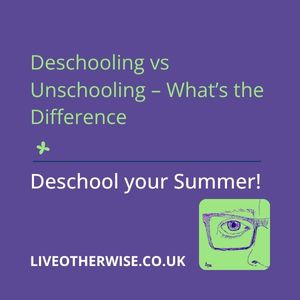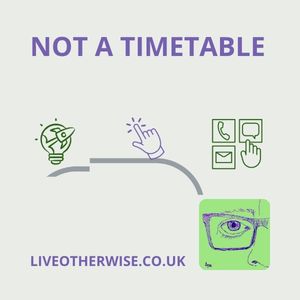As an Amazon Associate I earn from qualifying purchases.
When people start to home educate they often start to try to reproduce a school day and education broken down into subjects and topics – that’s what we are told education looks like after all. However, it’s not the only way to do it, and for many people it’s very much not the best way to do it.
Think about it – the school system is set up for efficiency in terms of having one teacher at the front of the room with a whole bunch of children, often up to 30, with different abilities, background knowledge and level of interest. You’ve got a handful of children – perhaps even just the one. You don’t need to be packaging the information to hit 30 different marks.
Turn it around another way, and think about a time you set out to learn something you were interested in. Maybe a new hobby or skill – perhaps you learnt from a class, but you might have watched youtube, read a book, listened to a podcast or found a friend to teach you. And because you were interested, even if it was hard, you persevered, it was fun, perhaps you made mistakes but laughed it off and kept going – and you developed that skill that you wanted.
Why can’t your home education look more like that? Set aside the expectations or guidelines for a minute, and think about what your child is interested in. Ask them what they want to learn or be or work towards – you might be surprised. Then build the resources and the education around that.
You could use youtube. (Yes, depending on your child’s age/ abilities you’ll want to think about the safety aspects of them running free on youtube, but that’s another rabbit hole for another time.) Perhaps there’s an app. Maybe there are classes, clubs, online tutorials based around it, or perhaps you’ll have to figure it out together. Don’t forget the library, both physical books and online offerings, and of course podcasts. Basically, think outside the box 😉

Don’t worry too much about the resources being designed to be educational – perhaps there are documentaries about the topic that would be useful – they’ll be designed to be informational but there won’t be a quiz at the end.
How will you assess the learning? You’re right there with your child – talk to them, do the thing with them, let them tell you what they are learning.
All of this relies on your child being able to develop their learning from their own internal motivation – something called intrinsic motivation, which differs from doing things because of expectations, requirements or reward (extrinsic motivation). It’s a big factor in some alternative education systems, like the Montessori system, or you can read more about it in the writings of people like Alfie Kohn.
If all of this sounds great, and you’d like to know more about what life without a timetable could look like, I have a handy free download with resources and links. Sign up to my newsletter for access (you can unsubscribe immediately, but I hope you’ll want to stick around!) If you’re already a subscriber, and have missed out on this new download, it’s available on a pay what you want (starting at 0) basis here.
If all of this has made you excited to learn more about different approaches to home education, you might be interested in the 12 hour live stream that took place early September. It’s available to watch on youtube either the full 12 hours, or a block per speaker. I was involved and you can catch up with my session here. Or if you want more on intrinsic motivation, there was a great talk from Dr Gina Riley all about this.
Hope you’ve enjoyed this post – if you have please feel free to share.





Leave a Reply